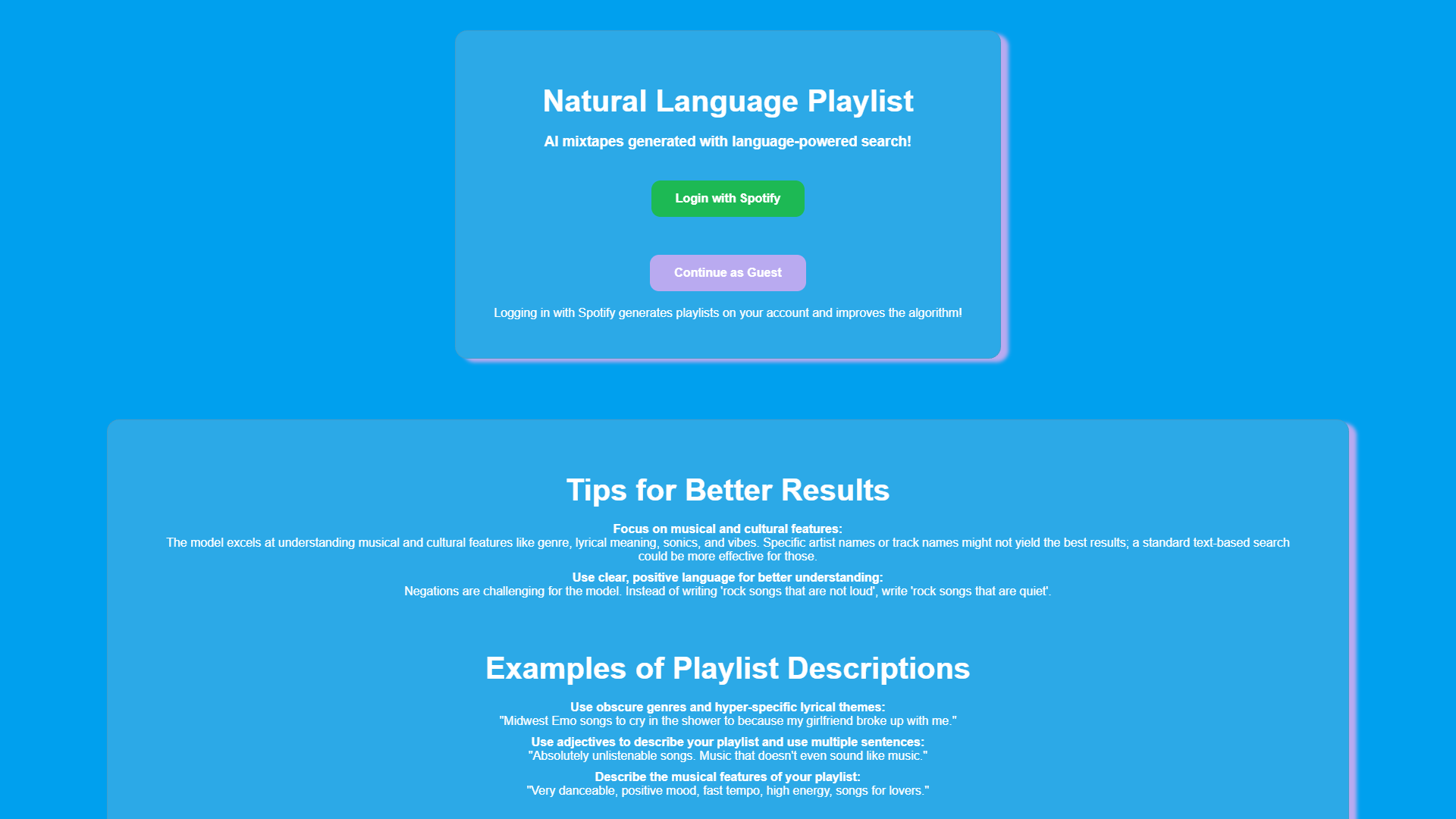Overview
Natural Language Playlist is an innovative tool designed to revolutionize how users discover music by employing a unique approach that leverages language-powered search. Unlike traditional methods, this tool allows users to create personalized playlists by focusing on a song's musical and cultural attributes, like genre, lyrical themes, and overall vibe. This ensures users find music that truly resonates with their preferences.
Whether logging in through Spotify to get personalized playlists or exploring as a guest, users can enjoy an enriching musical journey that mirrors their tastes. The tool's easy-to-use interface encourages clear and positive language, helping users craft playlists that precisely match their desired mood or thematic intent. With curated examples and tips on creating impactful playlist descriptions, the Natural Language Playlist ensures that music discovery is both enjoyable and effective.
Developed by a passionate data science graduate who has deep music industry knowledge, this music-loving tool builds strong connections between language, music, and culture. Ideal for music aficionados who cherish discovering fresh tracks, Natural Language Playlist offers an engaging and enriched music discovery path.
Key features
- Language-powered music search: The tool uses advanced language processing to search for musical traits beyond basic tags, allowing users to discover songs through intricate details like mood and cultural background.
- Spotify and guest access: Users can connect through their Spotify accounts or explore as a guest, offering flexibility in how they engage with the tool and saving their personalized playlists easily.
- Cultural trait recognition: By understanding a song's cultural and lyrical themes, the tool generates playlists that cater to specific user moods and preferences, ensuring relevance and enjoyment.
- Custom playlist creation: With options to describe desired playlists using unique and creative language, users can craft tailored mixtapes that express their specific musical desires.
- Data-driven recommendations: The tool builds playlists using a curated dataset of textual song metadata, enhancing the musical and cultural accuracy of results for a tailored listening experience.
- Smooth user experience: Its user-friendly design makes it easy for users of all ages and backgrounds to navigate and make the most out of its features.
 Pros
Pros
- Easy-to-use interface: The straightforward design makes it accessible for everyone to create and explore playlists without any hassle or steep learning curve.
- Supports musical exploration: By understanding nuanced musical characteristics, users can broaden their musical horizons and discover new genres and artists easily.
- Innovative playlist descriptions: Allows unique and colorful descriptions, enabling users to creatively express their musical preferences and intentions for playlists.
- Personalized user experience: Offers a customized experience through textual preferences, aligning with user-specific tastes in music for more meaningful engagements.
- Comprehensive search functionality: Users can generate varied playlists by specifying features like tempo, energy, and vibe, which enriches the music selection process.
 Cons
Cons
- Relies on user input: The accuracy of the playlists heavily depends on user input, which may challenge those less expressive in describing their musical tastes.
- Limited to text descriptions: Although innovative, the constraint of text-based input could limit creativity for users who prefer visual or other input forms.
- May not suit all genres: Certain music genres might not be as effectively matched due to varying lyrical and cultural contexts, affecting the tool's scope.
- Cultural nuances complexity: While the tool recognizes cultural traits, the complexity of accurately capturing diverse cultural nuances in music remains challenging.
- Language barrier: Non-native speakers might find crafting playlist descriptions challenging, potentially limiting the tool's accessibility across different linguistic groups.

















